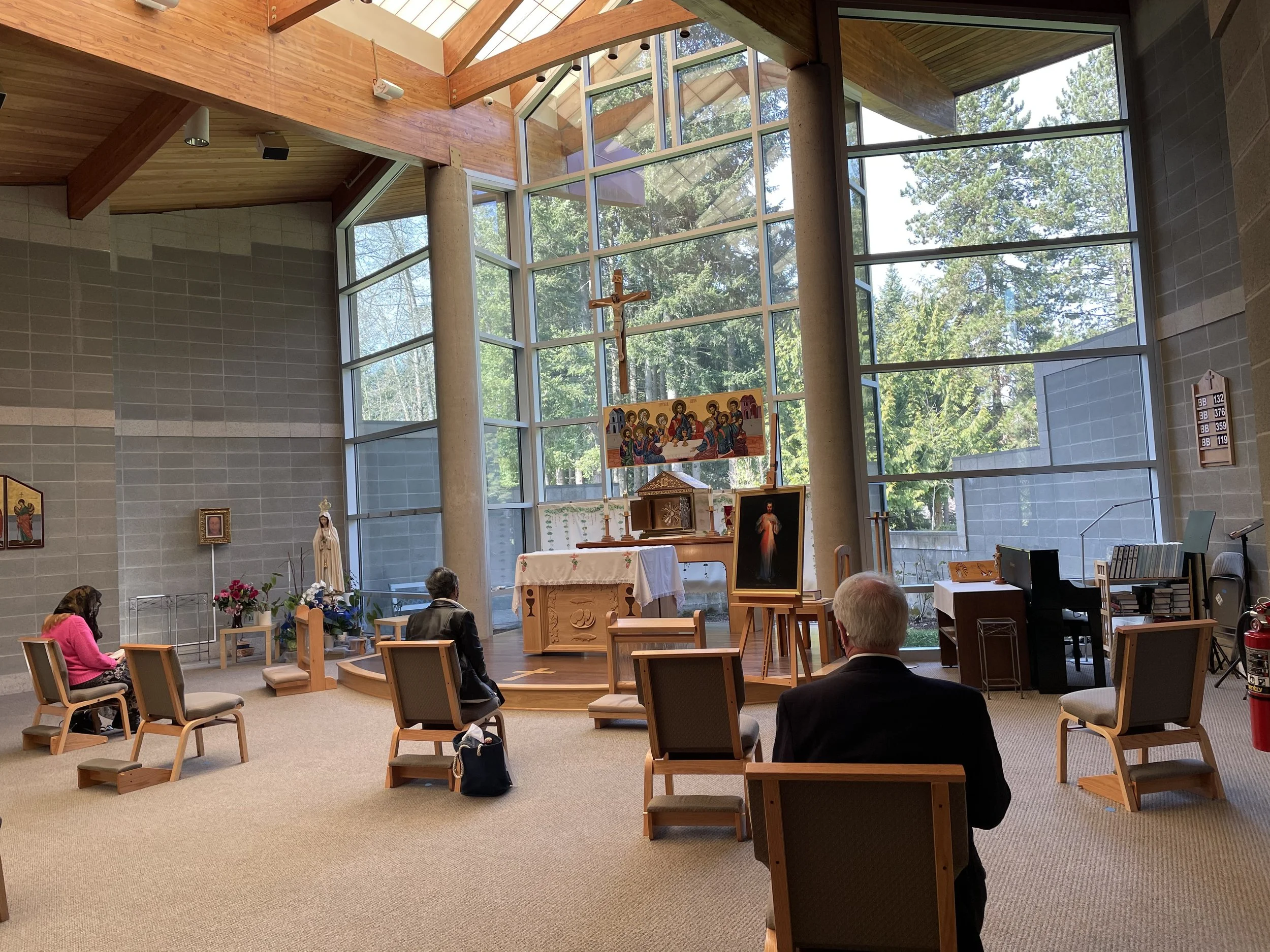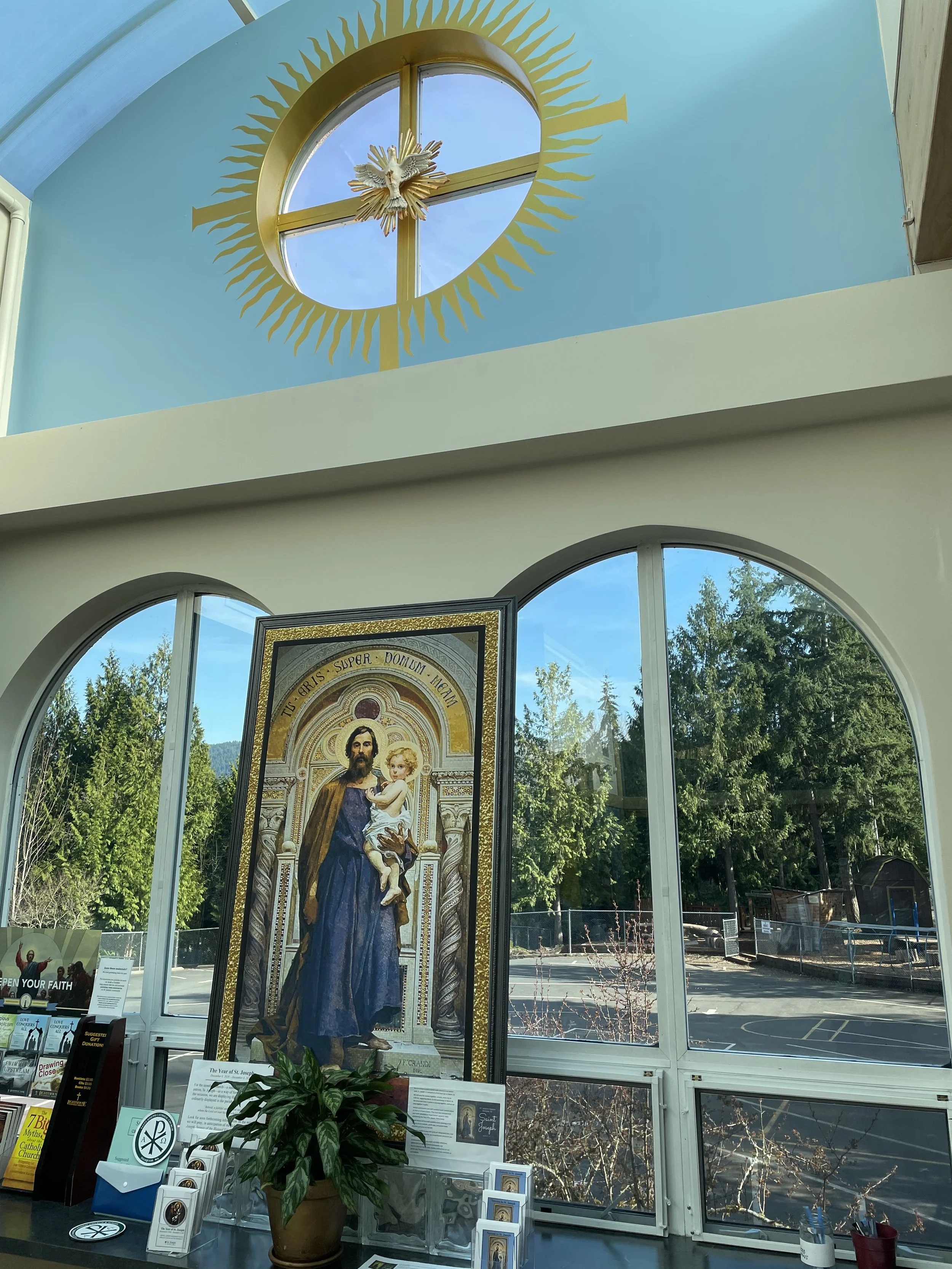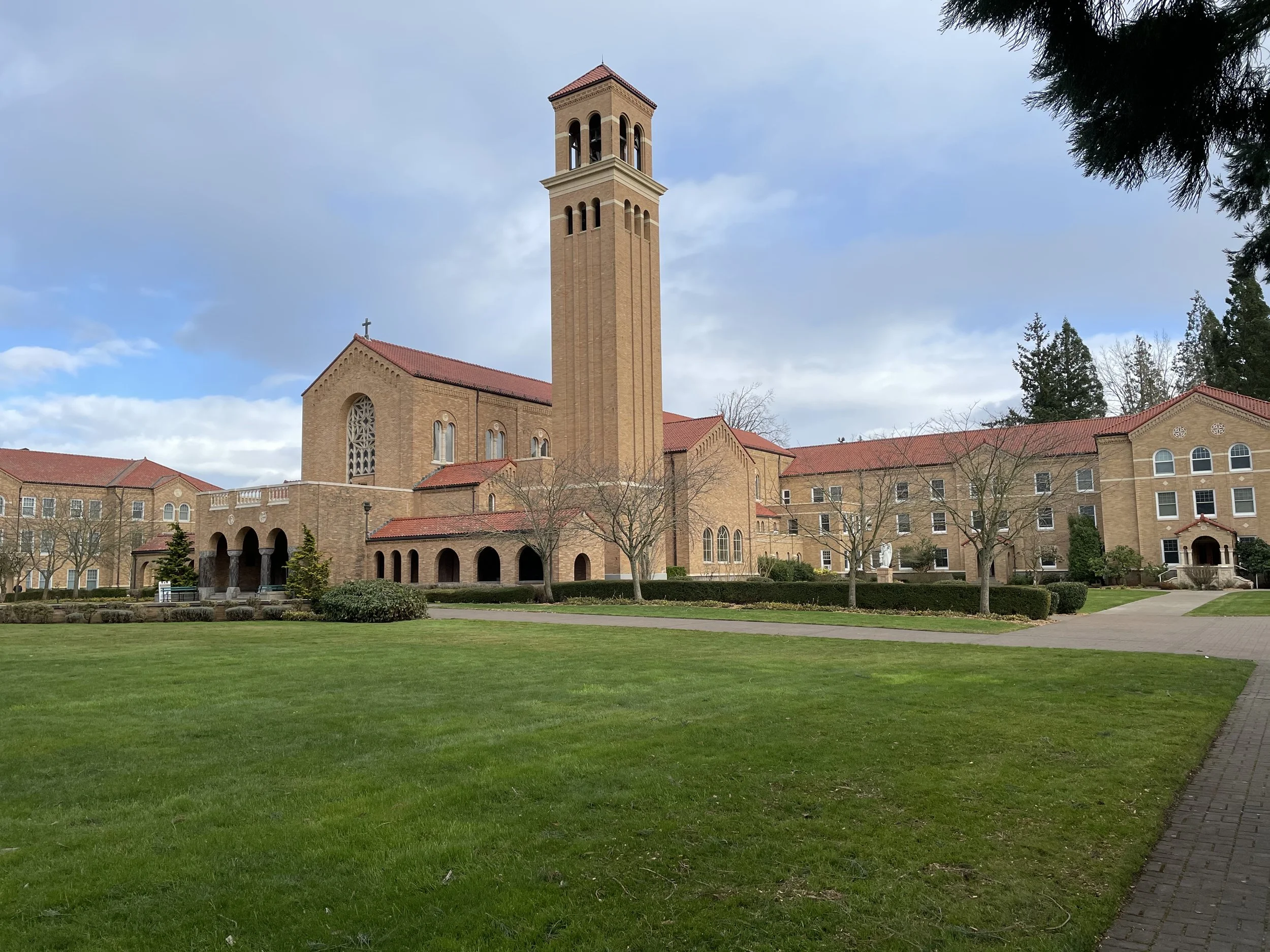The search for Adoration
Adoration at Saint Stephen the Martyr in Renton.
Last year, I did an interesting experiment during Lent where I decided to show up at a Catholic church every day to take part in something called the Adoration of the Blessed Sacrament. This is not at all a Protestant practice nor something I grew up with, but I wanted to keep vigil, as it were, and Catholic churches were the only places that were consistently open during daylight hours for prayer. This, I decided, would be a discipline where my main sacrifice during Lent would not be food or chocolates but time.
[If you want to understand a little of what adoration is, click on this website from St. Julia’s near Boston. Notice their “Café Julia.” It’s one of the only Catholic Church in the country with MY name mentioned.]
Anyway, it takes time to schlep to a church every day for at least 15 minutes. The vast majority of my stops were in churches in the Archdiocese of Seattle, although I did spend a week in Oregon searching out churches there. My first visits were in the suburbs east of Seattle and one of the first places I dropped by was Our Lady Queen of Peace in neighboring Sammamish, a lovely light-filled place. Then I began attending what would be my regular parish: St. Joseph’s in Issaquah, which has an open church during much of the day for people to pray in. There, adoration is every day most of the day and there are helpful pamphlets outside the door (in the lobby) to help you pray, read Scripture, learn about Adoration, etc. Here’s a parish that takes adoration seriously, I thought. There’s a busy school downstairs, so there are always people on the property, unlike many churches I visited.
The next day, I headed south for five days in Oregon, trying to stop at a church somewhere near I-5. That proved difficult, as few were actually open during the day. I finally found St. Francis Xavier Mission, off an isolated exit in Lewis County about 20 miles north of Longview. This is the oldest church in the archdiocese, founded in 1838 by French-speaking priests, sent by the bishop of Quebec, who arrived by canoe along with four Indians. At the time, the only folks in the area were traders from the Hudson’s Bay Co. (this was still the Oregon territory), some very early settlers and Indians. The place was next to senior housing for the Cowlitz tribe and a cemetery in the Cowlitz prairie in the middle of nowhere, just to the north of the town of Toledo. There was, amazingly, one other person there praying besides me. It was a simple place and the tombstones outside – some of them – went back more than 100 years. There was an amazing pole – like a totem pole, called a “Catholic ladder” to the right of the church entrance that marked out the years since creation using some kind of Native markers for hundreds and thousands of years.
The next day, I repaired south of Portland to St. Peter’s Newberg, but it was closed. My rule was to be present whether churches were unlocked or not, so I stood outside and prayed. The next two days, I was reporting on the brewery at Mt. Angel Abbey, so I took refuge in the lovely St. Benedict chapel in the guesthouse. The chapel was intimate and warm – almost too much so as I found myself nodding off.
Driving back north, I tried grabbing a few moments in St. James Molalla, but an unexpected Mass interrupted me and I left. Back home, I began looking up parish adoration times and found a mishmash of opportunities. Some churches were generous sanctuaries that were open all the time. Others were closed except for certain hours on certain days, ie the first Saturday of the month from 3-5 pm. That seemed a really small space in which to confine adoration and those parishes, I figured, didn’t seem to take it very seriously.
The back of St. Joseph’s in Issaquah. Of all the parishes I visited, this church had the most helpful pamphlets.
It took no small amount of work to try to find an open parish each day. The first week of each month had more adorations than others, which is how I found myself at St. Jude’s, Redmond, one of the loveliest locations, among the pine trees, that I found for any parish. The building was large and airy; the only odd part was the portrayals of Jesus in the stations of the cross against the back balcony; he was shown as a white guy, which today is seen as quite inaccurate. But St. Jude’s has been in Redmond for years and maybe that was the art style back in the 70s before we heard of more historically accurate depictions. Some parishes, like St. Madeleine Sophie in Newport (
Bellevue), were open weekdays from 8-2, albeit not for adoration. Still, I found a special chapel for adoration that I sat in. Rarely did I ever see any pamphlets in any church explaining adoration and what it meant and what that thing the Host was in (a monstrance?) and what it signified.
Others advertised adoration on their web sites but weren’t open, like St. Ann’s, a brick church in a hardscrabble section of south Tacoma whose parking lot was surrounded by a fence. Clearly there was crime in the area. I knocked on the doors, which were locked even though adoration was slated for that day. Someone must have seen me on the security cameras, as a Vietnamese nun came out and unlocked the church doors. I learned there are Masses in Vietnamese and Samoan there. I was having a bad day, so I wanted to be there. I sat in a front pew and gazed at the1960s-era crucified Jesus above the altar while a man vacuumed the sanctuary near the back. It was tough to concentrate, so I left.
I always had a collection of books and prayer guides that I’d take inside a church. Most times I’d wear a mask, as there were other people about. My minimum time was 15 minutes but often I’d get lost in thought or prayer and be there much longer. I’d read a sentence from one of my booklets and just mull over it.
Finding anything inside Seattle city limits was very tough. Most churches were closed nearly all the time. Some parishes didn’t even mention adoration or had missing links (St. Therese, Immaculate Conception, St. Peter, St. Anne and St. Mary’s); others, like St. James Cathedral, only had adoration on Fridays in Lent, which isn’t much for the major gathering point for the archdiocese. That was in 2021; I couldn’t find any adoration listing for 2022. Christ Our Hope had adoration every other Wednesday, and has since switched to first Wednesdays of the month. The Chapel of St. Ignatius on the Seattle University campus only allowed students and staff last year. This year, I only saw one listing for adoration, and that during Holy Week. St. John Chrysostom (Byzantine rite) looked super interesting but all the events were early in the morning or at 6:30 pm. And that was last year; checking their web site this year, I couldn’t find any mention of it. Our Lady of Mt. Virgin parish, which served several Asian populations in south Seattle, had several adoration times. But the overwhelming impression I got - while searching about - was of locked, inaccessible churches. Seattle is fifth in the country in terms of homeless population, so I can see why the downtown churches restrict their open hours; they’d be packed with homeless otherwise.
Mount Angel Abbey in Oregon. If you visit, sneak into their St. Benedict chapel. It’s lovely.
Many churches had very limited hours and mainly for people who didn’t hold down jobs. St. Martin of Tours in Tacoma only had adoration one hour a week from 9-10 a.m. Fridays. (!!!) Other churches down there weren’t much better. Holy Rosary had nothing (that I could find) neither did St. Joseph’s; St. Patrick’s did have it Monday and Friday afternoons with a sign-up sheet on their site. So did Holy Cross on Wednesdays.
Back on the Eastside, Our Lady of Sorrows in Snoqualmie also limited adoration to one hour a month on Fridays. I was praying there while construction work was going on around me. Holy Family in Kirkland had it for one hour Wednesday mornings and one hour Saturday afternoons, which wasn’t enough by far. One church, St. Charles Borromeo, helpfully had adoration all day on Fridays.
In central Washington, Holy Family Catholic Church in Yakima only had it one hour a week; Mondays from 6-7. St. Paul Cathedral had it from 11:30-6 on Fridays. I dropped by St. John’s Naches, but it was closed.
One real pet peeve: No parish, except for St. Joseph’s, Issaquah, had adoration on Saturdays. I could not figure out why. That’s a day most of us have off and can drop by. Mondays were also deserts; no church seemed to be open that day.
After Lent ended, I didn’t continue my visits to these churches, although in some places (St. Joseph’s Issaquah and Saint Stephen the Martyr in Renton), I was amazed at the number of people devoting attending adoration. I found that when churches devoted time and space for people to take advantage of this form of devotion and kept their churches open enough hours of the day, people actually dropped by. Some of my data is a year old, so I hope these churches have enlarged their hours but I have a feeling most have not. Or, if they have adoration times, they are impossible to find on church web sites. Or the information on the web sites is old; last year, Saint Teresa of Calcutta in Woodinville said they had adoration, but when I got there, the doors were locked.
Again, I am not Catholic, so my observations are from without the camp. Still, the center of any parish is the people who pray for it, and I could pretty well judge the health of a church by the space it devoted to adoration. As a non-Catholic, I hope that Catholics can up their game on this adoration idea. There’s more to it than even they know.


